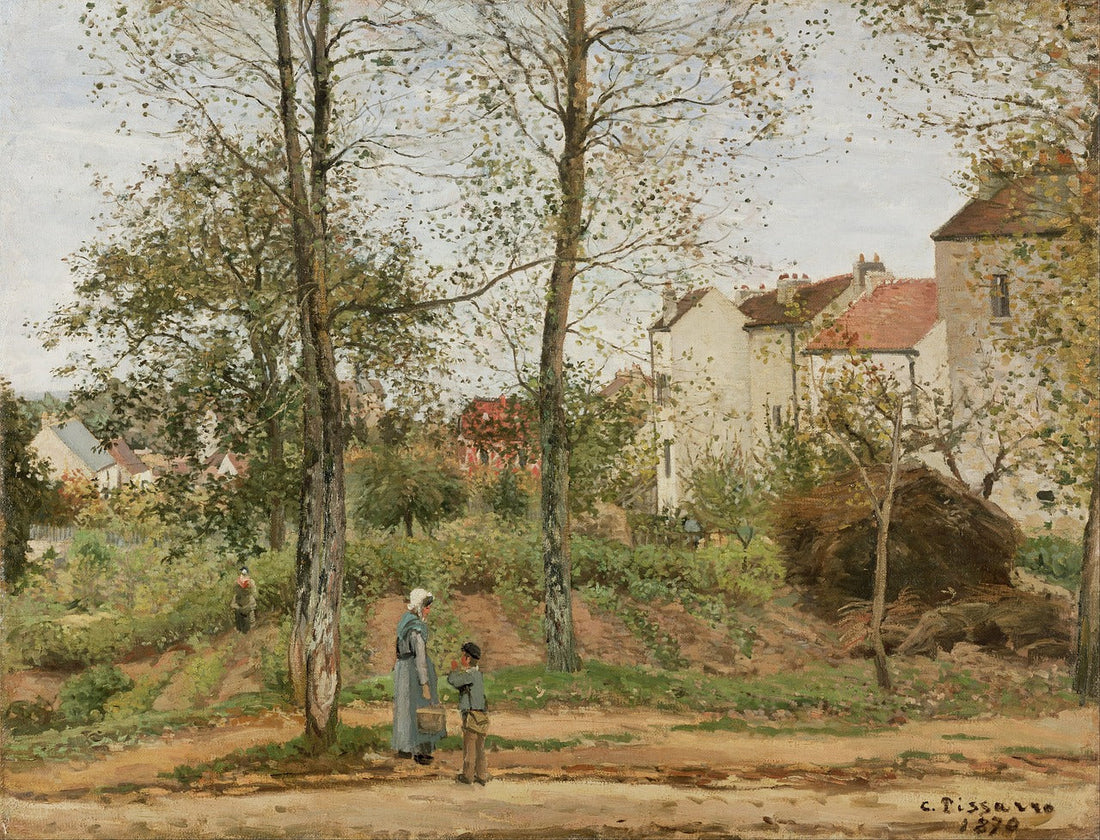When you think of the French Riviera, images of glistening seas and pastel villages may come to mind. But beyond the postcards and glamorous coastlines lies a quietly profound legacy — one rooted in creativity, experimentation, and craftsmanship. This is a region that has drawn artists for centuries and continues to inspire new forms of artistry today — including ours at Soapyard.
Why Artists First Came to the Côte d’Azur
The Côte d’Azur began attracting painters in the second half of the 19th century, as improvements in rail transport allowed easier access to this once-remote southern stretch of France. Artists, weary of the constraints of the Paris academies, came in search of light, colour, and space. And what they found was extraordinary: a landscape bathed in luminous clarity, vivid Mediterranean hues, and quiet hilltop villages undisturbed by modernity. For the Impressionists, and those who followed, the Riviera became a living canvas — rich with visual poetry.
Camille Pissarro, Claude Monet, and Pierre-Auguste Renoir were among the first to visit. Later, the likes of Henri Matisse, Marc Chagall, and Pablo Picasso made this region their studio and sanctuary. Their arrival transformed the Côte d’Azur into one of the 20th century’s most important art enclaves.
The Musée Picasso, Antibes
The Grimaldi Castle in Antibes, which once housed Picasso’s studio in 1946, is now home to the Musée Picasso, a collection of works donated by the artist and his heirs. Pieces from his post-war period can be found here — intimate, experimental, and sun-washed. You’ll find ceramics, sketches, and paintings created during his brief but prolific stay.
Picasso was captivated by the coast’s vitality. He loved the scent of the pine trees, the crashing of waves against ancient stone, and the timeless rhythm of daily life here — all of which coloured his work in Antibes. It’s impossible not to feel that energy when standing inside the museum’s sea-facing walls.
The Fondation Maeght, Saint-Paul-de-Vence
Tucked away in the hills above Nice, the Fondation Maeght is a modernist treasure, housing one of Europe’s most important collections of 20th-century art. From Miró’s surrealist sculptures to Giacometti’s haunting bronze figures, the collection is both international and deeply local. The garden, dotted with monumental artworks under open Provençal skies, feels more like a living museum than a gallery.
Musée Fernand Léger, Biot
Just a short drive from Antibes lies the town of Biot, home to the Musée National Fernand Léger, dedicated to one of Cubism’s boldest voices. Léger spent the final years of his life here, and the museum celebrates his colourful, rhythmic style in a building surrounded by tiled mosaics and sun-drenched courtyards. It’s a perfect blend of architecture, form, and Southern light.
Colour, Fragrance and Soapyard
Soapyard didn’t arrive in the Côte d’Azur by accident. We chose this region not just for its beauty, but for its spirit — one of creativity, tradition, and sensory delight. Anyone who’s wandered through a Provençal market will understand: the stalls overflow with colour, from pyramids of olives to bundles of lavender, and the air is perfumed with spices, citrus, and traditional Marseille soaps.
These markets are what first drew us in — the nostalgic scent of olive oil soap, the warm greetings of local vendors, the handmade ropes of savon de Marseille drying in the sun. There’s a generosity of atmosphere here that’s hard to define, but impossible to forget. It's what inspired Soapyard to create soaps that not only cleanse, but evoke a sense of place, craftsmanship, and beauty.
Visit, Wander, and Be Inspired
The art museums of the Côte d’Azur are more than cultural attractions — they are windows into the relationship between place and creativity. Whether you’re standing in front of a Léger mural, breathing in the salty air near Picasso’s Antibes studio, or perusing a village soap stall rich with handmade bars, you’re part of a tradition of inspiration that continues today.
Soapyard is proud to call this place home — not just for the sun, but for the soul.
Further Reading and Links
Camille Pissarro Biography (Tate)
Claude Monet Foundation in Giverny (linked for extended reading)

